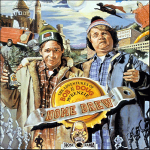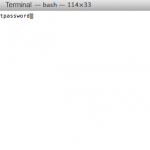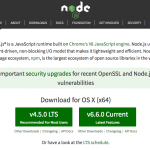The easiest way to install a number of Unix style applications and open source software onto macOS Catalina, Mojave and earlier Sierra OS versions is via a package manager, unfortunately, macOS Catalina doesn’t come with one, but fortunately, some good folks care, they come in the form of Homebrew. The install of Homebrew also works on …
Read More
Upgrade to PHP 7.3 or 7.2 on macOS Mojave, Sierra or on OSX 10.6 – 10.11
macOS Mojave ships with PHP 7.1, High Sierra 7.1, Sierra ships with PHP 5.6, OSX 10.11 El Capitan with PHP 5.5.x, there is an easy upgrade method to either the latest PHP version 7.3 or 7.2 or you can also go back to the older stable version 5.6. PHP versions 5.5 and older are now considered end …
Read More
Generate SSH Private and Public Keys in macOS Mojave
This guide goes through setting up SSH keys on macOS Mojave 10.14 back to Mac OSX 10.11 and also a secure password-less SSH connection between a local macOS workstation and a remote server also running a Linux variant operating system. The process requires generating a public and private key on the local computer and then …
Read More
Reset Forgotten Admin Password on macOS Mojave and macOS Sierra
The passwords for all accounts on macOS Mojave 10.14, macOS Sierra, OSX 10.11 El Capitan, OSX 10.10 Yosemite, OSX 10.9 Mavericks and OSX 10.8 Mountain Lion including admin and standard user accounts can be reset and changed when booted from the Recovery Partition on macOS. Boot into Recovery Partition Reboot into the Recovery Drive by choosing the ‘Apple‘ …
Read More
Installing node.js on macOS Mojave, macOS Sierra and earlier OSX
node.js allows you to run javascript in the Terminal as appose to a regular browser which makes for a modern workflow in web development, with both node.js installed and a package manager called npm (Node Package Manager) also installed, which can manage other packages that work with node.js, one of the main ones being gulp.js for a web development workflow. To …
Read More
Restart, Start, Stop MySQL from the Command Line macOS, OSX, Linux
To restart, start or stop MySQL server from the command line, type the following at the shell prompt… On Linux start/stop/restart from the command line: /etc/init.d/mysqld start /etc/init.d/mysqld stop /etc/init.d/mysqld restart Some Linux flavors offer the service command too service mysqld start service mysqld stop service mysqld restart or service mysql start service mysql stop …
Read More
Minimum System Requirements for macOS Mojave 10.14 – Is yours good enough?
Find out if your system meets the requirements of the new macOS Mojave 10.4. Apple have released a developer beta of their upcoming operating system named macOS Mojave, which will be macOS 10.14. The name MoJave continues on with their California landmarks with the name after a scenic CA region, it should be publicly available between September to November. …
Read More
How to compress and uncompress files and folders in the Terminal in macOS Sierra
Since macOS is based on Unix there are a number of ways to compress files and folders within the filing system using Unix based application code, below are a few options using the Terminal or command line interface (cli). The default command line application interface in macOS is the Terminal and is stored in /Applications/Utilities. File and folder compression saves on …
Read More







